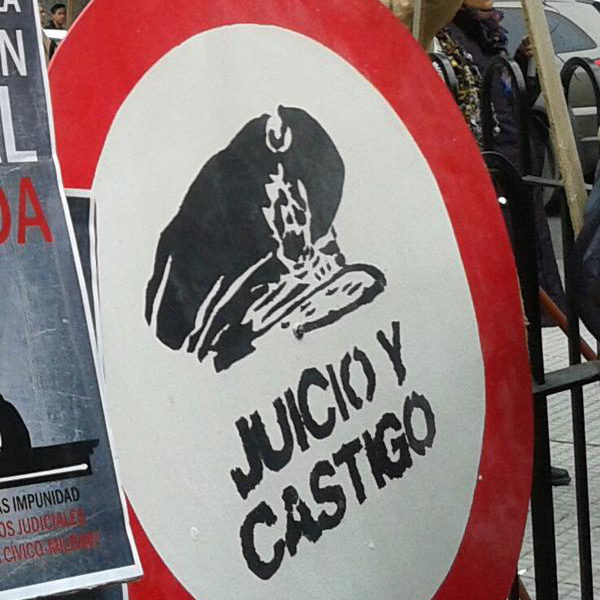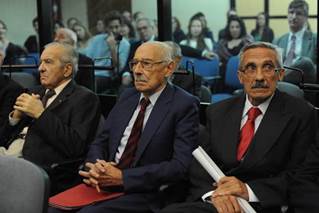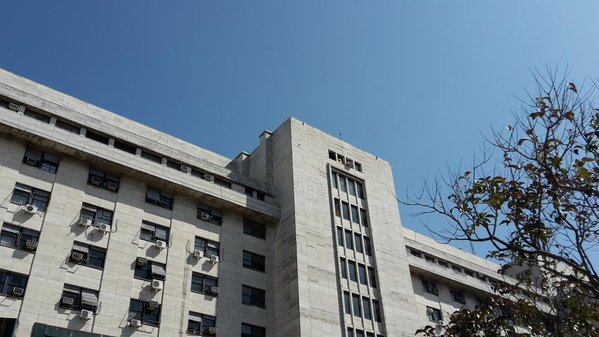05.03.2016
By Francesca Lessa
Three years ago on March 5 the so-called Plan Condor trial started.
Over the past ten years, I have researched accountability for past human rights violations in South America. In 2013, I embarked on a new project, monitoring the so-called Plan Condor trial. This unparalleled prosecution is, for the first time, trying to shed light on crimes committed jointly by six South American dictatorships in the 1970s. The trial has the potential to write a new page in the history of this region. Sentencing is expected next April.
Word of Mouth
I first heard about the trial by chance, through a Uruguayan friend of mine. I like to think the trial found me, rather than the other way round. My friend told me several months beforehand that a prosecution where she had been included as a victim of illegal detention and torture within the framework of Plan Condor was finally about to start. Plan Condor, established by Argentina, Bolivia, Brazil, Chile, Paraguay, and Uruguay in late 1975, had been a continent-wide operation that murdered and disappeared hundreds of left-wing activists outside their home countries regardless of national borders at the time when the whole of South America was convulsed by authoritarian military rule, fear, and terror.
 What was the reason that had convinced the dictatorial states to work together, to establish a borderless area of terror and impunity to commit crimes in South America in the mid-1970s? And how was it possible that, almost 40 years after the events in question, a domestic court in Argentina was ambitiously, as well as unprecedentedly, finally bringing to justice those responsible for transnational atrocities?
What was the reason that had convinced the dictatorial states to work together, to establish a borderless area of terror and impunity to commit crimes in South America in the mid-1970s? And how was it possible that, almost 40 years after the events in question, a domestic court in Argentina was ambitiously, as well as unprecedentedly, finally bringing to justice those responsible for transnational atrocities?
The Courtroom
On March 5, 2013, it was sunny in Oxford. At least, I recall it that way. Every day I met up with two friends, punctually at 1:30 pm, in the dining hall of St Anne’s College. But I made it late to lunch that day.
March 5 was unlike any other day. I had already spent the whole morning glued to my computer screen in my office, anxiously awaiting the live feed transmission from the webpage of the Argentina’s Judicial Information Centre from the tribunals located in Comodoro Py, in downtown Buenos Aires. That afternoon, the historic Plan Condor trial was scheduled to start. And I was unwilling to miss even a single minute of it.
I could not be away from Oxford due to teaching commitments. I, thus, dispatched Pierre, my research assistant who was living at the time in Buenos Aires, to the trial. He was going to be my eyes and ears in that courtroom. Funny enough, that first day, I even saw him from the webcam feed all the way from Oxford.
 The courtroom was standing room only. That day, the four judges of Criminal Federal Tribunal 1 of Buenos Aires began prosecuting 27 defendants – though nowadays, only 18 are left. Five passed away since the trial started and four were exonerated due to health reasons. Of the original defendants, 26 were Argentine -24 from the Army, one from the Navy and one civilian intelligence office- and one is a Uruguayan former military officer, Juan Manuel Cordero Piacentini. He is the second foreigner to be tried in Argentina for Plan Condor crimes, after the case of the Chilean intelligence agent Enrique Arancibia Clavel in the early 2000s.
The courtroom was standing room only. That day, the four judges of Criminal Federal Tribunal 1 of Buenos Aires began prosecuting 27 defendants – though nowadays, only 18 are left. Five passed away since the trial started and four were exonerated due to health reasons. Of the original defendants, 26 were Argentine -24 from the Army, one from the Navy and one civilian intelligence office- and one is a Uruguayan former military officer, Juan Manuel Cordero Piacentini. He is the second foreigner to be tried in Argentina for Plan Condor crimes, after the case of the Chilean intelligence agent Enrique Arancibia Clavel in the early 2000s.
The trial tackles the cases of over 170 victims of Plan Condor, all citizens of Argentina, Bolivia, Chile, Paraguay, and Uruguay targeted by the transnational coordination of terror in South America in the 1970s. In addition to the individual kidnappings, torture, and murders, the prosecution is also trying to demonstrate that Plan Condor constituted an asociación ilicita, a joint criminal enterprise by the dictatorial states to perpetrate crimes against humanity beyond borders.
I firstly walked the corridors of Comodoro Py on a freezing September 17, 2013. It is a haunting building, with long and busy corridors.
The testimony of victims and relatives struck me the most about the trial. Listening to them recounting their life stories or those of their loved ones is a deeply moving experience. Through their words, the past became alive in the present. A person’s absence became presence. A presence demanding justice and for the truth to emerge.
I attended only three hearings in 2013. They were enough to make me realise there was nowhere else I was meant to be but there, watching history being recovered and made at the same time.
 When I returned to Comodoro Py on October 31, 2014, I had come to stay. I had left the dreaming spires of Oxford behind, changing them for the hustle and bustle of Buenos Aires. I hardly had time to look back since. I sat through countless hours of testimonies, listening to the harrowing tales of survivors of unspeakable crimes, to relatives who never faltered in their quest for justice, and to analysts explaining archival documents proving the existence and inner workings of Plan Condor.
When I returned to Comodoro Py on October 31, 2014, I had come to stay. I had left the dreaming spires of Oxford behind, changing them for the hustle and bustle of Buenos Aires. I hardly had time to look back since. I sat through countless hours of testimonies, listening to the harrowing tales of survivors of unspeakable crimes, to relatives who never faltered in their quest for justice, and to analysts explaining archival documents proving the existence and inner workings of Plan Condor.
I cried. I was unable to speak at times overwhelmed by what I had heard. I smiled when meeting familiar faces in the courtroom, or when I saw them through the videoconferencing system for testimonies from abroad.
What assessment can we make of the trial, three years later?
The tribunal has amassed an extraordinary wealth of proof, hundreds of testimonies and documents from all over the region and beyond. No other institution has been able to gather such rich evidence on Plan Condor. The tribunal’s work is indeed historic. I have no doubt whatsoever the repressive coordination functioned as a deadly and precise machinary targeting political opponents all across South America.
Judicial truth is imperfect. Some cases will remain unresolved or only partially elucidated; in others, the trial allowed for new information to emerge and be pieced together. Four decades have elapsed. Evidence and proof are not always available to match the court’s high standards. Witnesses and survivors are passing away.
The judges face the impossible task of responding to atrocious crimes as murder and disappearance. The court cannot undo the wrongdoings perpetrated. But the courtroom has been an outlet for victims and their families to speak out, for them to relate not only what they had to live through but also had to be silent about for decades, because of fear first, and then impunity and indifference later.
Argentina was one of the countries responsible for Plan Condor and the location of, possibly, the majority of the transnational crimes committed. Through its judiciary, Argentina is finally assuming responsibility for the very horrors it perpetrated. This is no small feat in the struggle against impunity. It can only be hoped that its neighbours can follow suit sooner than later.
Read more on the Plan Condor Trial

